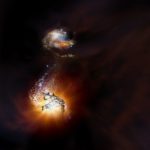Glossary of Radio Astronomy Terms
Sensitivity:
The sensitivity of a telescope is the smallest signal that it can clearly measure from a source in space. It is the minimum brightness that a telescope can detect. A telescope with high sensitivity can detect very dim objects, whereas a low sensitivity telescope can only detect the brighter objects in space.
Sphere of influence:
The innermost region of a galaxy where a black hole’s gravity is the dominant force.
Solar Mass:
A solar mass, the calculated mass of our sun (332,946 times the mass of Earth). It is a standard unit of measure for extremely massive cosmic objects.

Sagittarius A*:
A supermassive black hole that is located at the center of the Milky Way Galaxy. This powerful radio source lies just 26,000 light years from Earth and was discovered in 1974 by Bruce Balick and Robert L. Brown at Green Bank Observatory. (See supermassive black holes for more)

Satellite:
A natural or artificial body in orbit around a planet.

Seyfert galaxy:
A galaxy that appears to be a normal spiral galaxy, but whose core fluctuates in brightness. It is believed that these fluctuations are caused by powerful eruptions in the core of the galaxy powered by material falling toward a supermassive black hole at the center of the galaxy.

Shell Star:
A type of star which is believed to be surrounded by a thin envelope of gas, which is often indicated by bright emission lines in its spectrum.

Sidereal Day:
The time required for Earth to revolve 360 degrees with respect to a celestial object outside the solar system. This equals about 23 hours 56 minutes duration in terms of solar time.

Singularity:
The center of a black hole, where the curvature of space-time is maximal. At the singularity, the gravitational tides diverge.

Solar Eclipse:
A phenomenon that occurs when the Earth passes into the shadow of the Moon.

Solar Flare:
A brilliant outbreak in the Sun’s outer atmosphere, usually associated with active groups of sunspots.
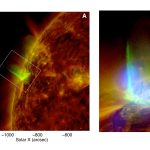
Solar System:
A star and the non-luminous objects associated with it, which may include brown dwarfs, planets, asteroids, and comets.

Special Relativity:
A theory developed by Albert Einstein that relates space and time. It was based on the ideas that the laws of physics are the same in all inertial reference frames and that the speed of light in a vacuum is constant. Some of the predictions and consequences that come out of it are: time dilation, mass-energy equivalence, and relativity of simultaneity.
Spectra:
The plural term of spectrum, which refers to the range of electromagnetic radiation wavelengths.
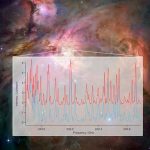
Spectral Line:
Light given off at a specific frequency by an atom or molecule. Every different type of atom or molecule gives off light at its own set of frequencies. Therefore, astronomers can look for gas containing a particular atom or molecule by tuning the radio telescope to one of the gas’s frequencies. One example would be tuning the radio telescope to 115 gigahertz to find carbon monoxide (CO) which has a spectral line at 115 gigahertz (or a wavelength of 2.7 mm).

Spectral Sequence:
The temperature classification system for stars ranging from hot (O and B) to cool (K and M). The Spectral Sequence is arranged in the following order: O, B, A, F, G, K, and M.
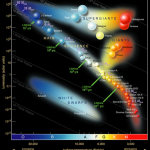
Spectrometer:
A detector that can be connected to a telescope that can separate the signals into different frequencies, producing a spectrum.

Spectroscopic:
The unique spikes in electromagnetic radiation that correspond to specific molecules and elements.

Spectrum:
A plot or distribution of light intensity at different frequencies and wavelengths.

Speed of light (c):
The speed which light travels through a vacuum, which is measured as 299,792,458 meters per second. Einstein’s Theory of Special Relativity implies that nothing can travel faster than the speed of light. (See Einstein’s Theory of Special Relativity for more)

Spiral Galaxy:
A galaxy that is shaped like a flattened rotating disk full of young stars, a central bulge of generally older stars, and a surrounding halo of older stars and dense clusters of old stars called globular clusters. The disk is prominent due to the presence of young, hot stars in a spiral pattern.
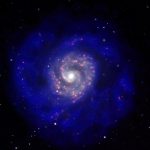
Star:
A giant ball of hot gas that creates and emits its own radiation through nuclear fusion.

Star Cluster:
A large grouping of stars, from a few dozen to a few hundred thousand, that are bound together by their mutual gravitational attraction.
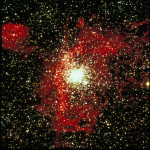
Starburst Galaxy:
A bright galaxy in which many new stars are rapidly forming, up to 1000 times faster than star formation in the Milky Way. Often triggered by galaxy mergers and interactions.

Stellar Wind:
The ejection of gas from the surface of a star. Many different types of stars, including our Sun, have stellar winds. The stellar wind of our Sun is also known as the Solar wind. A star’s stellar wind is strongest near the end of its life when it has consumed most of its fuel.
Sun:
The star that the Earth, as well as the other plants in our solar system, orbits around.
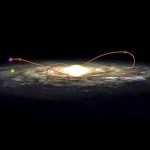
Supergiant:
A very luminous star that is 10 to 1000 times more massive than the Sun.

Superluminal Velocity:
The apparent motion of an object at greater than light speed; this appearance is caused by a “projection effect” or by the object’s motion toward Earth.
Supermassive Black Hole:
A black hole that has a million or as much as a billion solar masses. These large black holes lurk at the centers of most galaxies.
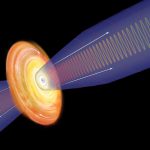
Supernova:
The extremely violent explosion of a star many times more massive than our Sun after the nuclear furnace at its core can no longer balance out the force of gravity. During this explosion, these stars may become as bright as all the other stars in a galaxy combined, and in which a great deal of matter is thrown off into space at high velocity and high energy. The remnant of these massive stars collapse into either a neutron star or a black hole.
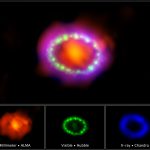
Supernova Remnant:
The expanding shell of gas from a supernova explosion.

Synchrotron Radiation:
Radiation emitted by charged particles being accelerated in magnetic fields and moving at near the speed of light.
Starbursting galaxies:
Bright galaxies in which many new stars are rapidly forming, up to 1000 times faster than star formation in the Milky Way. Often triggered by galaxy mergers and interactions.
